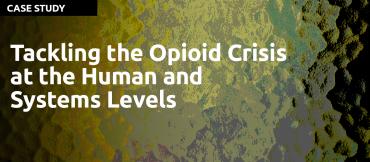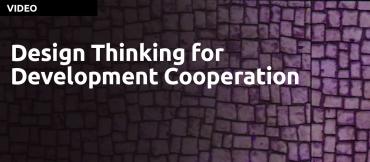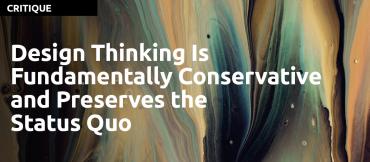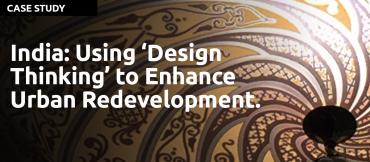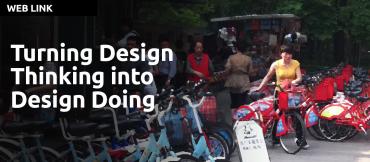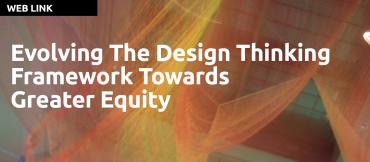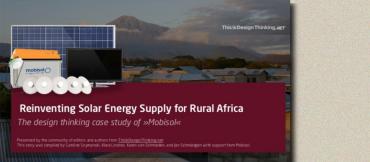
Design Thinking has been successfully used in the Non-Profit/Social Impact Industry by institutions such as Clean Team Ghana, Positive Deviance Initiative and Open Africa. Read case studies on these corporations involvement with design thinking and other thought leadership articles about the use of design thinking in Non-Profit/Social Impact on this page.
How the Lummi Tribal clinic used design to address opioid overdoses
The average American wastes enough food each month to feed another person for 19 days. Through a number of projects with The Rockefeller Foundation and other organizations, IDEO designers from across the U.S. devised novel ways to tackle food waste.
Victoria Peters discusses the problem of development cooperation between Europe (or anywhere else in the developed world) and Africa. She describes how the developed nations have killed creativity in Africa and how Design Thinking is one (good) way to bring that back.
Victoria believes that Design Thinking can create engaged citizens and engaged economies. She believes that Design Thinking can really reshape development cooperation by:
In this article Natasha Iskander argues that Design Thinking enables corporations to justify their risk averse decisions under the guise of a thin veil of understanding their customers needs. We call it design think washing! While this is an interesting critique, it misses the fact that it is not the methodology that is creating this problem as much as it is the way that it is being used. Design thinking should not be blamed as much as the people implementing the methodology. Natasha addresses that in a sort of rant against designers being the gatekeepers.
The discourse on urban planning and development has evolved over the last century with top-down methods of planning urban spaces giving way to bottom-up approaches that involve residents and other stakeholders in the design process. While the notion of participation and user involvement is considered critical to the design of appropriate and acceptable urban forms, there is no clear consensus in the literature on the methodology to be used to involve users and stakeholders in the design process.
Ever since it became clear that smart design led to the success of many products, companies have been employing it in other areas, from customer experiences, to strategy, to business ecosystems. But as design is used in increasingly complex contexts, a new hurdle has emerged: gaining acceptance (for the new solutions).
What is a Social Technology? Jeanne Liedtka presents her thoughts on Design Thinking as a Social Technology at the 2020 Global Design Thinking Alliance virtual conference.
More videos from Jeanne Liedtka
Learning Design Thinking requires both experiential and social learning. It is like learning to ride a bicycle, it is very much an experience of "doing" - experiential. You cannot learn how just by having someone explain it to you—you have to actually try to do it yourself to find your own balance. You also need to practice to get better.
One of the most common misconceptions about prototyping is that you do it after you’ve determined your product or service. But this assumption goes against the true value of prototyping itself!
Prototyping should be a core part of your entire project’s life cycle, allowing you to test opportunities earlier on and gain confidence that the project is headed in the right direction.
An interviewed Tania Anaissie, the Founder and CEO of the social justice design firm Beytna Design and the co-creator of a new form of design thinking called Liberatory Design.
Liberatory Design combines the innovative potential of design thinking, the systemic lens of complexity theory, and the healing powers of equity practices to redesign how people work and live.
Mattia Tamborini describes what he did in his Design Bootcamp project. He learned what NGO's lacked in competences and found out some of the challenges they faced, but ultimately helped them to become more effective. What he learned about NGO's will help all NGO's and associations to understand themselves better and make similar improvements.
Jeff Chapin discusses his work in Cambodia designing latrine and hand washing solutions for rural areas. He talks about how the Design Thinking process helped him come to solutions that delivered customer insights that helped them to arrive at solutions that met the customers actual needs.
For the millions of Ghanaians without in-home toilets, there are few good options when it comes to our bodies' most basic functions. Working with Unilever and Water and Sanitation for the Urban Poor (WSUP), IDEO.org developed Clean Team, a comprehensive sanitation system that delivers and maintains toilets in the homes of subscribers. Clean Team now serves 5,000 people in Kumasi, Ghana, making lives cleaner, healthier, and more dignified.
Being part of an ever-connected society, many people in the Global North can barely fathom that still more than 1.5 billion people live off the grid. Instead of simply plugging in, they use kerosene lanterns that only illuminate spots in their home, walk miles to charge their mobile phones, or run a diesel generator to power their business.
Open Design Africa operates as a Social Impact company working on problems in small communities in Cape town using design thinking to understand the real issues that need to be addressed. An interesting podcast with Suné Stassen, leader of the group. Her insights working with Design Thinking in disadvantaged communities are insightful.
Jerry Sternin, founder of the Positive Deviance Initiative and an associate professor at Tufts University until he died last year, was skilled at identifying what and critical of what he called outsider solutions to local problems. Sternin’s preferred approach to social innovation is an example of design thinking in action.
Are you solving the right problem?

